Cerebral Embolic Protection by Geographic Region
JAMA Cardiology
OCTOBER 28, 2024
This randomized clinical trial evaluates regional differences in the association between stroke outcomes and cerebral embolic protection.
This site uses cookies to improve your experience. By viewing our content, you are accepting the use of cookies. To help us insure we adhere to various privacy regulations, please select your country/region of residence. If you do not select a country we will assume you are from the United States. View our privacy policy and terms of use.

Circulation
NOVEMBER 11, 2024
Patients with a history of prior hemorrhagic stroke were excluded from this analysis. Circulation, Volume 150, Issue Suppl_1 , Page A4141940-A4141940, November 12, 2024. Multivariable Cox proportional hazards models and Fine-Gray sub-distribution hazards models were used to adjust for confounding factors.

Circulation: Cardiovascular Interventions
JUNE 10, 2024
We reported the feasibility and short-term outcomes of percutaneous transcatheter therapy with cerebral embolic protection. During the follow-up, 12.50% (n=3) all-cause death, 4.17% (n=1) stroke, and 16.67% (n=4) recurrence were seen. 1273.47) days, stroke was 1211.38 (95% CI, 1110.40–1312.35)
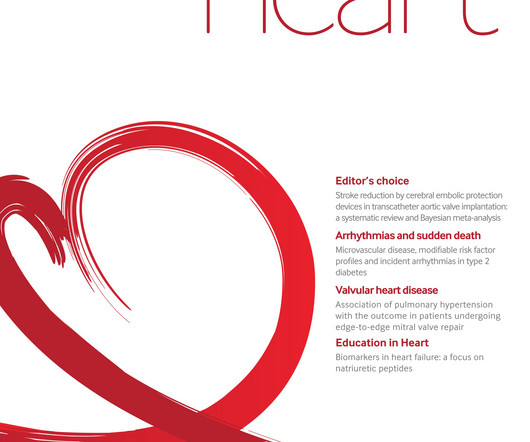
Heart BMJ
MAY 10, 2024
Objectives The use of cerebral embolic protection (CEP) during transcatheter aortic valve implantation (TAVI) has been studied in several randomised trials. We aimed to perform a systematic review and Bayesian meta-analysis of randomised CEP trials, focusing on a clinically relevant reduction in disabling stroke.

Stroke Journal
FEBRUARY 1, 2024
Stroke, Volume 55, Issue Suppl_1 , Page AWP214-AWP214, February 1, 2024. Introduction:Middle meningeal artery embolization for chronic subdural hematomas is a promising treatment either as an adjuvant to surgical evacuation of the hematoma or as a primary treatment modality. The mean maximal diameter of the collection was 16.3 ± 6.6
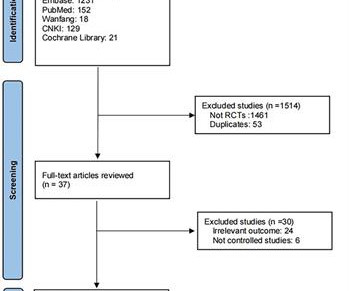
Frontiers in Cardiovascular Medicine
FEBRUARY 22, 2024
Aims Perioperative stroke remains a devastating complication after transcatheter aortic valve implantation (TAVI), and using a cerebral embolic protection device (CEPD) during TAVI may reduce the occurrence of stroke according to some studies. The risk of stroke was lower in the CEPD group: RR 0.68, 95% CI 0.49–0.96,

Frontiers in Cardiovascular Medicine
DECEMBER 20, 2023
Massive pulmonary embolism (MPE) carries significant 30-day mortality and is characterized by acute right ventricular failure, hypotension, and hypoxia, leading to cardiovascular collapse and cardiac arrest. Considerable heterogeneity in studies is a significant weakness of the available literature.

Stroke Journal
FEBRUARY 1, 2024
Stroke, Volume 55, Issue Suppl_1 , Page A64-A64, February 1, 2024. Background:Atrial cardiopathy is associated with incident ischemic stroke in the absence of clinical atrial fibrillation in prospective cohorts. Recurrent stroke occurred in 80 patients (annualized rate, 4.4%) and death in 54 patients. female, 21.1% Black, and 8.1%

Journal of the American Heart Association
JANUARY 19, 2024
BackgroundCerebral embolic protection devices (CEPD) capture embolic material in an attempt to reduce ischemic brain injury during transcatheter aortic valve replacement. Primary clinical outcome was all‐cause stroke. Secondary clinical outcomes were disabling stroke and all‐cause mortality.

Journal of the American Heart Association
FEBRUARY 23, 2024
BackgroundIn patients with acute cardiogenic cerebral embolism, a residual thrombus may still be present in the cardiac cavity even after reperfusion therapy. The primary outcome was a poor clinical outcome (modified Rankin Scale score, 3–6) at 90 days. versus 31.1%;P=1.000).ConclusionsResidual versus 31.1%;P=1.000).ConclusionsResidual

Stroke Journal
FEBRUARY 1, 2024
Stroke, Volume 55, Issue Suppl_1 , Page AWMP87-AWMP87, February 1, 2024. and 4.2%, while good outcome was similar between 40% and 38%. and 0%, recurrent stroke 6.4% Purpose:The technique and efficacy of endovascular treatment (EVT) for intracranial atherosclerotic occlusion (ICAD) have not been established. Reocclusion was 3.1%

Stroke: Vascular and Interventional Neurology
NOVEMBER 9, 2023
Stroke: Vascular and Interventional Neurology, Volume 3, Issue S2 , November 1, 2023. Middle meningeal artery embolization (MMAE) is a promising minimally invasive alternative with an estimated surgical recurrence rate of 6.8% Primary outcome is defined as the proportion of patients that require rescue surgery or die within 180 days.

Circulation
NOVEMBER 11, 2024
While intracardiac cardiac tumors and shunts are infrequent and typically asymptomatic, their existence can precipitate severe outcomes, including stroke, myocardial infarction and sudden death.Case Description:A 69-year-old female presented with left sided facial droop, slurred speech and left arm weakness.

Stroke Journal
FEBRUARY 1, 2024
Stroke, Volume 55, Issue Suppl_1 , Page ATP195-ATP195, February 1, 2024. Previous studies have noted that ICAD-related LVOs, compared to embolic occlusions, have longer procedural times and lower successful reperfusion rates. However, clinical outcomes remain similar.

Stroke Journal
FEBRUARY 1, 2024
Stroke, Volume 55, Issue Suppl_1 , Page A97-A97, February 1, 2024. vs 19.6%, p=0.002) and a past-history of stroke/TIA (36% vs 25%, p<0.001) when compared to non-AC group. Chronic embolic (non-lacunar) infarcts on imaging were more common among AIS-despite-AC (34.5% Patients who had AIS-despite-AC were younger (76.8+11

Stroke: Vascular and Interventional Neurology
NOVEMBER 9, 2023
Stroke: Vascular and Interventional Neurology, Volume 3, Issue S2 , November 1, 2023. The inflow aneurysms were accessed and embolized with coils using a second microcatheter prior to AVM embolization. Embolization of three posterior feeding pedicles was subsequently performed utilizing dilute NBCA.

Journal of the American Heart Association
FEBRUARY 29, 2024
BackgroundPrevious studies suggest an association between schizophrenia and stroke, but no studies have investigated stroke subtypes. Little evidence of associations with the other stroke subtypes was found. Journal of the American Heart Association, Ahead of Print.

Stroke Journal
DECEMBER 8, 2023
Stroke, Ahead of Print. BACKGROUND:Aortic arch plaques are associated with an increased risk of ischemic stroke in patients with cryptogenic stroke or prior embolic events. The plaque-related risk of outcomes was also analyzed according to the presence of statin treatment. During a mean follow-up of 11.3±3.6

Journal of the American Heart Association
NOVEMBER 28, 2023
We searched the PubMed, EMBASE, and Cochrane databases for randomized controlled trials that compared thromboembolic or bleeding outcomes between a direct oral anticoagulant (DOAC) and a vitamin K antagonist (VKA) and reported outcomes for patients aged ≥75 years with atrial fibrillation. prospero/.

Stroke Journal
JANUARY 30, 2024
Stroke, Ahead of Print. BACKGROUND:Intravenous injection of alteplase, a recombinant tPA (tissue-type plasminogen activator) as a thrombolytic agent has revolutionized ischemic stroke management. However, when associated to tPAWTlittermates, tPANullmice had similar perfusion deficits, but less severe brain infarcts.

DAIC
FEBRUARY 9, 2024
Preliminary late-breaking science presented today, the final day of the American Stroke Association’s International Stroke Conference 2024, ISC 2024, focused on findings from the EMBOLISE clinical trial, presented by Jason Davies, M.D., of patients who had surgery plus embolization and 11.3% The conference was held Feb.

Journal of the American Heart Association
FEBRUARY 14, 2024
BackgroundThe ABC‐stroke score is a risk scheme for prediction of stroke or systemic embolism (SE) in atrial fibrillation (AF). Having an annual ABC‐stroke risk >1% was associated with stroke/SE, stroke/SE/cardiovascular death, and all‐cause death (hazard ratio, 1.82 [95% CI, 1.44–2.21],

Stroke: Vascular and Interventional Neurology
NOVEMBER 9, 2023
Stroke: Vascular and Interventional Neurology, Volume 3, Issue S2 , November 1, 2023. were treated with an endovascular approach; 50% underwent onyx embolization, 28.6% underwent n‐BCA embolization, 14.2% underwent coil embolization, and 7.2% (n=1) underwent surgical intervention. Among those IIAs treated, 92.8%

Stroke Journal
FEBRUARY 1, 2024
Stroke, Volume 55, Issue Suppl_1 , Page AWP199-AWP199, February 1, 2024. Background:The benefits of endovascular thrombectomy (EVT) for posterior cerebral artery (PCA) occlusion remain controversial, but intravenous thrombolysis (IVT) has proven benefit across nearly all ischemic stroke types.
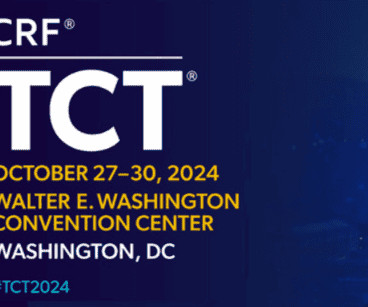
CardiacWire
NOVEMBER 3, 2024
Earlier TAVR didn’t result in statistically better outcomes than clinical surveillance, but it did support a greater improvement in overall KCCQ scores (12.8 The PROTECTED TAVR trial rounded out the major TAVR late-breakers, finding that cerebral embolic protection’s benefits varied geographically, and somehow didn’t reduce overall strokes.

Stroke: Vascular and Interventional Neurology
NOVEMBER 9, 2023
Stroke: Vascular and Interventional Neurology, Volume 3, Issue S2 , November 1, 2023. 3 The third‐generation iteration of the Pipeline Embolization Device (PED) incorporates Shield technology, a phosphorylcholine coating designed to reduce thrombogenicity via mimicry of native cell membranes.4
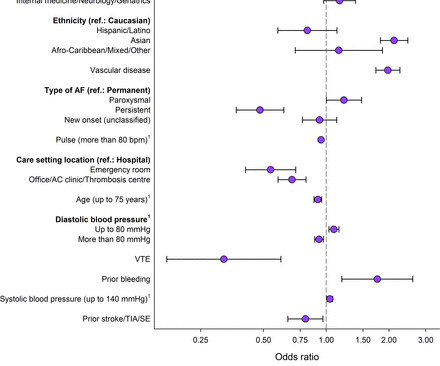
Open Heart
MAY 11, 2023
Objective There is a substantial incidence of stroke in patients with atrial fibrillation (AF) not receiving anticoagulation. The aim of our study was to investigate factors associated with patient refusal of anticoagulation and the clinical outcomes in these patients. to 1.76)) but lower all-cause mortality (aHR 0.59 (95% CI 0.43

Stroke: Vascular and Interventional Neurology
NOVEMBER 9, 2023
Stroke: Vascular and Interventional Neurology, Volume 3, Issue S2 , November 1, 2023. A prior published analysis of national trends after one year in mechanical thrombectomy use and outcomes for stroke before and after publication of the 2015 US guideline update showed improved functional outcomes and lower peri‐procedural mortality.

Stroke: Vascular and Interventional Neurology
NOVEMBER 9, 2023
Stroke: Vascular and Interventional Neurology, Volume 3, Issue S2 , November 1, 2023. IntroductionThe use of detachable coils for endovascular embolization of cerebral aneurysms has become a safe and effective alternative to direct surgical clipping in patients with ruptured aneurysmal subarachnoid hemorrhage.

Stroke: Vascular and Interventional Neurology
NOVEMBER 9, 2023
Stroke: Vascular and Interventional Neurology, Volume 3, Issue S2 , November 1, 2023. We studied the effects of COA treatment with FD alone or in combination with coil embolization, based on the origin of the ophthalmic artery in‐relation to the aneurysm sac.MethodsRetrospective analysis of a prospectively collected tertiary center database.

Stroke Journal
FEBRUARY 1, 2024
Stroke, Volume 55, Issue Suppl_1 , Page A66-A66, February 1, 2024. Introduction:Clinical practice guidelines recommend initiation of anticoagulation within 2 weeks after stroke due to atrial fibrillation (AF). Patients were randomized into one of 4 Arms: Day 3-4 from stroke onset, Day 6, Day 10, or Day 14.

Stroke: Vascular and Interventional Neurology
NOVEMBER 9, 2023
Stroke: Vascular and Interventional Neurology, Volume 3, Issue S2 , November 1, 2023. IntroductionHere, we describe a patient in whom ischemic stroke was caused by compression of the Internal Carotid Artery (ICA) by a Pseudoaneurysm (PSA) of the External Carotid Artery (ECA) after Gun Shot injury.

Journal of the American Heart Association
JANUARY 31, 2024
The primary outcomes were ischemic stroke, systemic embolic events, and hospitalization for major bleeding. The secondary outcomes were intracranial hemorrhage, hospitalization for gastrointestinal bleeding, all‐cause mortality, and a composite outcome. The median follow‐up duration was 2.4 1.06];P=0.11).
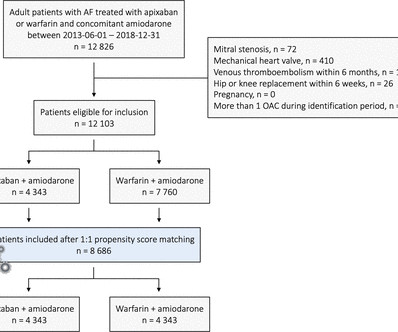
Open Heart
MARCH 1, 2024
The primary outcome was major bleeding resulting in hospitalisation based on International Classification of Diseases (ICD)-10 codes. Secondary outcomes included intracranial bleeding, gastrointestinal bleeding and other bleeding. Propensity score matching was performed, and matched cohorts were compared using Cox proportional HRs.

Stroke: Vascular and Interventional Neurology
NOVEMBER 9, 2023
Stroke: Vascular and Interventional Neurology, Volume 3, Issue S2 , November 1, 2023. With the advancement of endovascular coil devices, aneurysm embolization with coiling is becoming the more preferred treatment approach compared to craniotomy with microsurgical clipping.

Stroke Journal
FEBRUARY 1, 2024
Stroke, Volume 55, Issue Suppl_1 , Page AWP128-AWP128, February 1, 2024. Introduction:Defining the specific underlying pathophysiology of ischemic stroke is critical for minimizing the risk of recurrent events with personalized secondary prevention treatments.

Stroke Journal
FEBRUARY 1, 2024
Stroke, Volume 55, Issue Suppl_1 , Page ATP249-ATP249, February 1, 2024. Introduction:Over the past decade, the concept of Patent Foreman Ovale (PFO)-related stroke has been evolving. Current guidelines recommend PFO closure in young patients who had a non-lacunar ischemic stroke of undetermined cause and related to a high-risk PFO.

Stroke Journal
JANUARY 4, 2024
Stroke, Ahead of Print. Magnetic resonance imaging follow-up was obtained in 1439 patients, of whom 1358 had no symptomatic stroke during the trial period. Compared with placebo, asundexian 50 mg daily conferred a trend toward reduced risk of recurrent ischemic stroke or incident covert infarcts (hazard ratio, 0.71 [95% CI, 0.45–1.11])

Stroke: Vascular and Interventional Neurology
NOVEMBER 9, 2023
Stroke: Vascular and Interventional Neurology, Volume 3, Issue S2 , November 1, 2023. In addition to medical management with DAPT or anticoagulation and high intensity statin, our literature review supports endovascular or surgical interventions due to reportedly good outcomes.

Stroke: Vascular and Interventional Neurology
NOVEMBER 9, 2023
Stroke: Vascular and Interventional Neurology, Volume 3, Issue S2 , November 1, 2023. However, IVT's efficacy on stent retriever (SR) and aspiration thrombectomy (ASP) outcomes specifically remain unclear. ResultsWe included four randomized controlled trials with 1176 patients.

Stroke Journal
FEBRUARY 1, 2024
Stroke, Volume 55, Issue Suppl_1 , Page AWMP89-AWMP89, February 1, 2024. Aim:The first pass effect (FPE) and complete sudden recanalization (cSR) have been identified as an indicator of favorable clinical outcome. PR may reflect clot fragmentation and embolization, contributing to infarct growth and worse outcomes.

Circulation
JANUARY 24, 2024
The primary efficacy and safety outcomes were stroke or systemic embolic events (stroke/SEE) and major bleeding, respectively; secondary outcomes were ischemic stroke/SEE, intracranial hemorrhage, death, and the net clinical outcome (stroke/SEE, major bleeding, or death).

Stroke: Vascular and Interventional Neurology
NOVEMBER 9, 2023
Stroke: Vascular and Interventional Neurology, Volume 3, Issue S2 , November 1, 2023. IntroductionThe Pipeline Embolization Device (PED) is commonly used for intracranial aneurysm treatment. This review and meta‐analysis aimed to assess the long‐term outcomes of PED treatment for unruptured intracranial aneurysms (UIA).MethodsA
Expert insights. Personalized for you.
We have resent the email to
Are you sure you want to cancel your subscriptions?




Let's personalize your content